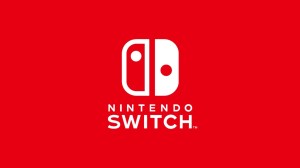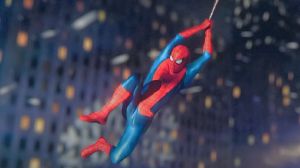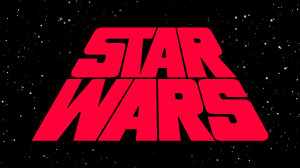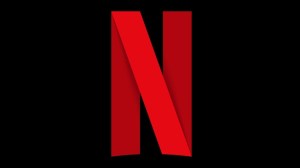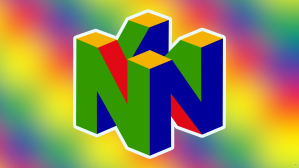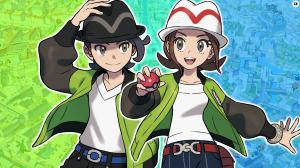
Major Spoilers for Original Sin throughout
Videos by ComicBook.com
It’s been a wild ride for Nick Fury over the past 50 years, but the finale to Marvel’s Original Sin miniseries marked the craziest turn for the character yet. After the Marvel Universe learns that Fury murdered Uatu the Watcher – with Uatu’s blessing and urging – the character is presumed dead in an explosion. However, it is later revealed that Fury is now functioning as the new Watcher of the Marvel U.
Assuming the mantel of “peeping Tom” of the cosmos is a far cry from Fury’s days as the head of the government espionage agency S.H.I.E.L.D. but it wouldn’t be the first time his status quo was drastically shaken up. He’s been a white-collar government agent, a swinging 60s super spy, a Howling Commando, a friend, an egomaniac, a renegade and a movie star.
With Fury’s latest turn in mind, this list takes a look at five different phases of Fury’s career through the lenses of the different comic book creators who have worked on the character.

5. Nick Fury, Man For the Job (Strange Tales #135)
About two years after his first appearance in Sgt. Fury and His Howling Commandos #1, Marvel reimagined Fury as the super spy he is best known as today in Strange Tales #135. The issue also marks the first appearance of the CIA-ish government agency S.H.I.E.L.D. and the evil terrorist group Hydra.
Clearly drawing influence from fictional spy/ladies man James Bond, whose first film, Dr. No, was released in 1962 just as the “Marvel Age of Comics” was getting off the ground, the Stan Lee and Jack Kirby story features tons of fantastical gadgets such as flying cars, giant aerial warships and life model decoys. It’s a comic that simultaneously feels so incredibly dated in its 60s spy-fantasy, while also incorporating a number of tropes and devices that have been the bread and butter of all Fury and S.H.I.E.L.D. stories for the following 50 years.

4. Nick Fury, Megalomaniac (Original Sins #5)
The final issue of the Original Sins mini features a pretty shocking reveal (and retcon) of one of Marvel’s most classic supporting characters. In the Al Ewing and Butch Guise story, Fury reveals to his long-time friend, Dum Dum Dugan (who was originally introduced alongside Nick in Sgt. Fury and his Howling Commandos #1), that he had was killed during a S.H.I.E.L.D. mission in 1966 and rebuilt as a Life Model Decoy.
Fury tells Dum Dum that the reasoning behind resurrecting him as a LMD was because they were both from a “different time” and he needed someone to act as his conscience. An enraged Dum Dum calls BS on Fury’s rationalizing, and tells him that the revelation has robbed him of his dignity, reducing him to mere “wind-up toy.” Dum Dum then shoots himself in the head, but not before asking Fury to not rebuild him. After the deed is done, Fury makes no guarantees.
While Fury, for years has been portrayed as super secret string-puller, often watching out for his own interests first, the Dum Dum reveal pushes Nick’s megalomania to a whole new level. The fact that he would manipulate and control one of his oldest friends in Dugan makes it appear like there’s no limit to what Nick Fury might do if it somehow benefits Nick Fury.

3. Nick Fury, Movie Star (The Ultimates)
Few can argue that without Mark Millar and Bryan Hitch’s landmark 2002-04 The Ultimates series, many popular elements of the Marvel Cinematic Universe would have never come to fruition – including some of the actors who were eventually cast in these movies. The Ultimates version of Nick Fury was first created by Brian Michael Bendis and Mike Allred in Ultimate Marvel Team-Up #5 in 2001. The character resembled his Marvel 616-version, but was later redesigned specifically to look like Hollywood A-lister Samuel L. Jackson. This point was further driven home when in an issue of The Ultimates, the team talks about who would play each of them in the movie version of their lives, and Fury said matter-of-factly that he would be portrayed by Jackson. When Jackson caught wind of his likeness being used in the comics, the actor reportedly contacted Marvel about portraying the character in any future films.
But beyond casting choices, Ultimate Fury is an important part of Marvel history because in his S.H.I.E.L.D. capacity, he is the straw that stirs the drink and brings together Captain America, Iron Man, Thor et al to form The Ultimates – similar to what transpires in the MCU.
After the Marvel movie-verse took off in popularity, a mainstream 616 universe character who looked like Jackson started to appear in various books. This character was revealed as Marcus Johnson, aka, Nick Fury Jr., one of Fury’s sons.

2. Nick Fury, Agent of Nothing (Secret Warriors #1-6)
In Marvel’s post-Secret Invasion universe, the Norman Osborn-run H.A.M.M.E.R. has replaced S.H.I.E.L.D. as a government agency, leaving Nick Fury as a renegade leader of a rogue group of “Secret Warriors.” During the opening arc of Secret Warrior (by Brian Michael Bendis and Jonathan Hickman, with art by Stefano Casselli), Fury discovers that S.H.I.E.L.D. has long been controlled by the terrorist group, Hydra. Fury assembles his new team of agents to combat Hydra leader Baron Von Strucker and the resurrected Hydra/Hand assassin Gorgon.
The Secret Warriors phase of Fury’s career captures all that we love to hate about the character. He’s arrogant and secretive with his younger subordinates, but given how Hydra has infiltrated S.H.I.E.L.D., the paranoia is completely justified. Hydra has also never been more deadly and threatening than it is in this series (which was a clear inspiration for the major plot twist that affected the Captain America: The Winter Soldier film and Marvel’s Agents of S.H.I.E.L.D. television series).

1. Nick Fury, Shirtless Warrior (Strange Tales #156-158)
No creator arguably had more of an impact of how Nick Fury was portrayed in comics than Jim Steranko, who started providing scripting and full art duties on the Fury/S.H.I.E.L.D. portions of Strange Tales in 1967 (an absolute rarity for creators in the era). Steranko built on the wacky, gizmo-heavy world of S.H.I.E.L.D. established by Lee and Kirby and enhanced it with more contemporary, but experimental, visuals that were considered groundbreaking for the medium. For example, Fury was no longer reduced to being a working stiff in a white shirt and slacks, and instead was costumed in sleeker bodysuits (and in many instances, he did battle sans shirt).
In the final three issues of Steranko’s first arc on Strange Tales, Baron Von Strucker, who had first been introduced in an early 60s issue of Sgt. Fury and His Howling Commandos was revealed to be the Hydra Supreme Leader, ultimately leading to a stylized and dynamic throwdown between Fury and Strucker. Just to amp the awesome up a few more notches, Strucker unveils the Satan’s Claw for the first time in this story – a super-powered gauntlet he uses to throw Fury around before the S.H.I.E.L.D. agent overcomes insurmountable odds and incinerates the Hydra Supreme Leader.


